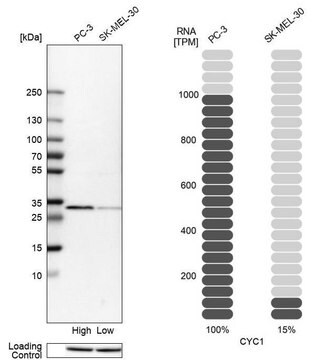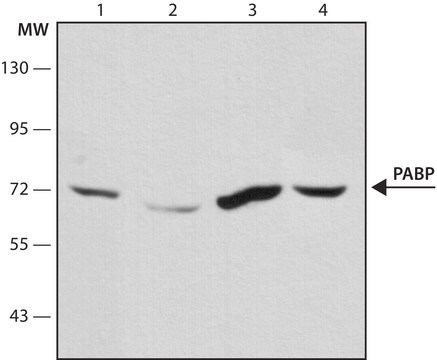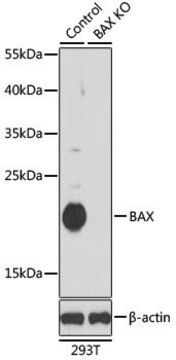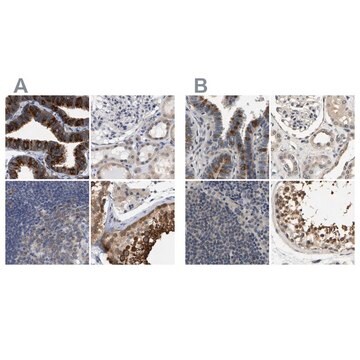SAB4200194
Anti-Pontin antibody, Mouse monoclonal
clone 5G3-11, purified from hybridoma cell culture
Synonym(s):
Anti-49 kDa TATA box-binding protein-interacting protein, Anti-49 kDa TBP-interacting protein, Anti-54 kDa erythrocyte cytosolic protein, Anti-ECP-54, Anti-INO80 complex subunit H, Anti-NMP 238, Anti-Pontin52, Anti-RUVBL1, Anti-RVB1, Anti-RuvB (e coli homolog)-like 1, Anti-RuvB-like 1, Anti-TAP54-alpha, Anti-TIH1, Anti-TIP49, Anti-TIP49A, Anti-TIP60-associated protein 54-alpha, Anti-nuclear matrix protein 238
About This Item
Recommended Products
biological source
mouse
Quality Level
conjugate
unconjugated
antibody form
purified from hybridoma cell culture
antibody product type
primary antibodies
clone
5G3-11, monoclonal
form
buffered aqueous solution
mol wt
~50 kDa
species reactivity
canine, human, monkey
technique(s)
immunohistochemistry: suitable
immunoprecipitation (IP): suitable
indirect immunofluorescence: suitable
western blot: 1:1,000-1:2,000 using whole extracts of human HEK-293T or MCF-7 cells
isotype
IgG
UniProt accession no.
shipped in
dry ice
storage temp.
−20°C
target post-translational modification
unmodified
Gene Information
human ... RUVBL1(8607)
General description
Immunogen
Application
- western blotting
- immunoprecipitation
- ChIP-sequencing
- immunohistochemistry
- immunofluorescence
- RNA immunoprecipitation
Biochem/physiol Actions
Physical form
Disclaimer
Not finding the right product?
Try our Product Selector Tool.
Storage Class Code
10 - Combustible liquids
Flash Point(F)
Not applicable
Flash Point(C)
Not applicable
Choose from one of the most recent versions:
Certificates of Analysis (COA)
Don't see the Right Version?
If you require a particular version, you can look up a specific certificate by the Lot or Batch number.
Already Own This Product?
Find documentation for the products that you have recently purchased in the Document Library.
Global Trade Item Number
| SKU | GTIN |
|---|---|
| SAB4200194-200UL | 4061838035288 |
| SAB4200194-25UL | 4061838035295 |
Our team of scientists has experience in all areas of research including Life Science, Material Science, Chemical Synthesis, Chromatography, Analytical and many others.
Contact Technical Service








